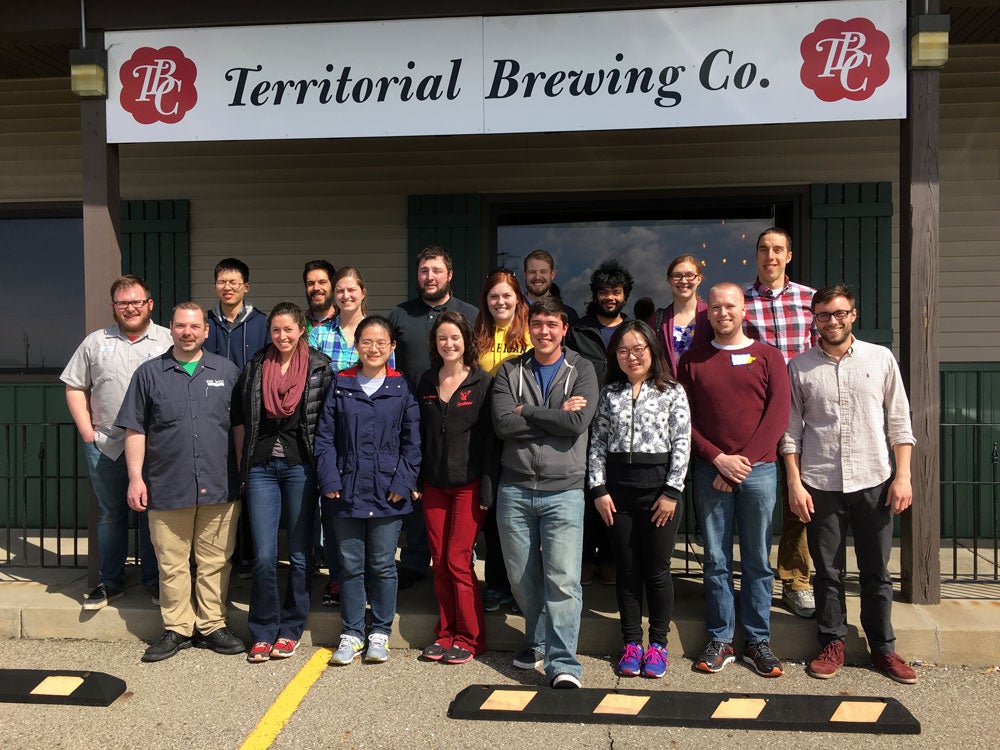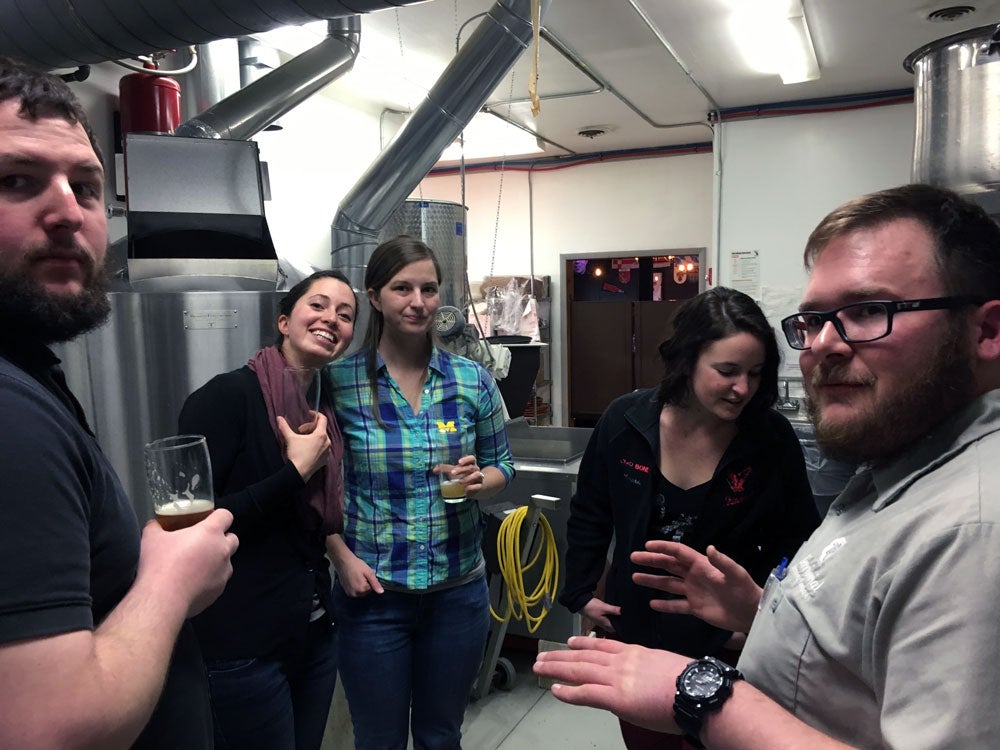
All aboard! Before most grad students had gotten out of bed, a group of 16 departed from the chemistry building towards Battle Creek. The entire group, ranging from first year PhD students to post-docs, were eager to see how their chemistry expertise could be put into practice. With confidentiality agreements signed, we arrived at the central R&D facility – W.K. Kellogg Institute for food & nutrition research (WKKI).
We were greeted by a range of Kellogg employees. Almost immediately, we were escorted through the pilot plant. Various sections of the plant are responsible for scaling up production of Keebler, Pringles, Kashi, Special K brand foods and more. This testing can be for production processes, new flavors, or completely new products. Fortunately for us, we were able to sample some delicious new flavors that we hadn’t seen in stores before.
All these products and processes are closely monitored by the numerous food scientists employed by Kellogg – many with PhDs in Chemistry. We were greeted by some familiar equipment in their labs – NMR, DSC, Rheometers, GC-MS to name a few. They are well equipped to analyze chemical properties, physical characteristics, moisture loss/retention, and a host of other properties that contribute to food taste, quality, and freshness. We took the plunge into real situations that the chemists face by discussing three case studies. These case studies introduced issues like adjusting a process by thinking about viscosity and fat content in chocolate, as well as the complications of switching to natural colors. The Kellogg chemists then revealed how used their chemical expertise to address these issues. This demonstrated that while it seems like we are in a completely different arena, we are already equipped with the basic principles and problem solving techniques required for success in food chemistry.
All of that hard thinking made us thirsty, so we drove just a few miles down the road to Territorial Brewing. We received a warm reception by two men with large beer steins, and felt instantly at home. They tooks us to the back of the restaurant/brewery to show off their small operation, walking us through each step in the process of making a delicious beer. For batch to batch consistency, they do employ several chemical and biological tests (in addition to the traditional tasting method). We did verify that their process yielded delicious results, but their wide range of offerings made us wish that we had more time and bigger glasses.


